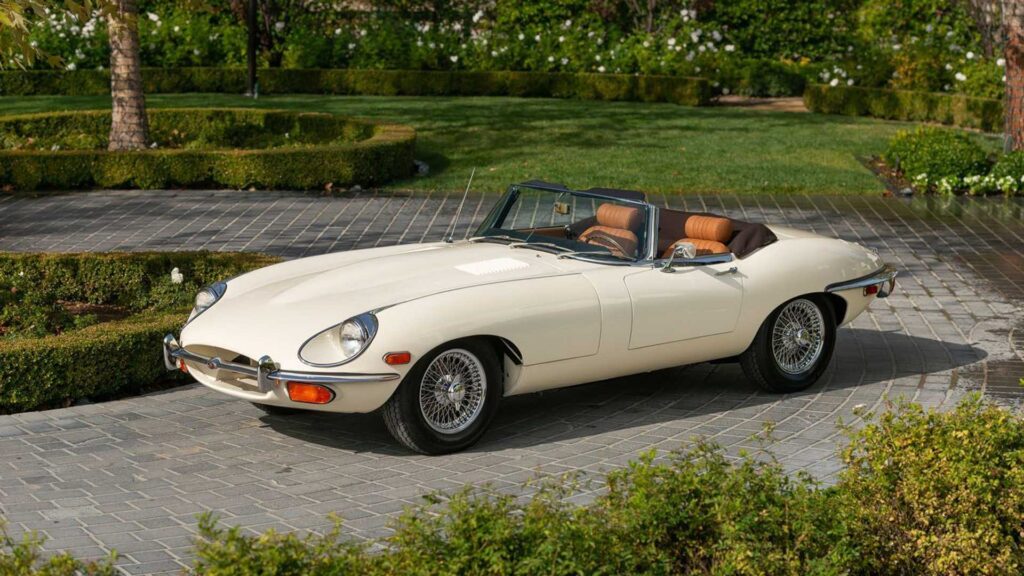Introduction
The Jaguar E-Type, also known as the XK-E in the United States, is one of the most iconic sports cars of all time. With its sleek and elegant lines, is often cited as one of the most beautiful cars ever made. The Series II, produced between 1968 and 1971, saw several changes from the original Series I. It represented both an evolution of the brand’s design and engineering philosophy. Incorporating various updates to meet new safety and emissions regulations.
Background and Design
The original E-Type, launched in 1961, became an instant classic. Its combination of beauty, performance, and competitive price made it a favorite among enthusiasts. William Lyons, Malcolm Sayer, and other key figures at Jaguar were determined to keep the momentum going with the Series II.
To create the Series II, the team made several changes to meet the increasingly strict safety and emissions regulations in the United States, a critical market for Jaguar.
Development
Pre-Series II Evolution
The Jaguar E-Type Series II didn’t appear out of thin air. Its predecessor, the Series I, underwent continual development since its introduction in 1961. Continuous improvements and subtle changes in specifications, including engine enhancements and various body tweaks, shaped what would become the Series II.
Transition from Series I to Series II
The transition to the Series II wasn’t merely an aesthetic exercise; it was a necessary evolution. By the late 1960s, strict American safety and emissions regulations demanded substantial changes. The company had to find ways to retain the model’s iconic appeal while adapting to these new rules.
ARE YOU A SERIES II JAGUAR E-TYPE BUYER/ SELLER? CLICK HERE:
Specific Models
Coupe and Roadster
The Series II was offered in both coupe and roadster configurations. The coupe provided a more refined driving experience with its fixed roof, while the roadster offered the pure exhilaration of open-top driving.
2+2 Version
The 2+2 version was a critical addition to the lineup, offering a slightly more practical take on the sports car. With a longer wheelbase and the ability to accommodate rear passengers, it appealed to those who needed more than a two-seater.
MODELS / YEARS
Exterior and Interior Changes
The Series II’s most apparent changes included larger indicators, repositioned and more substantial bumpers, and enlarged “mouth” at the front to allow more cooling air. Inside the car, the rocker switches are replaced with toggle switches, reducing the potential injury risk in the event of an accident. The interior remained luxurious and retained the sports-focused feel of the original.
Influence on Car Design
Aerodynamics
The aerodynamic design, developed by Malcolm Sayer, who had an aircraft background, was groundbreaking. The sleek, flowing lines of the E-Type would influence sports car design for decades to come.
Balance of Form and Function
The Series II, like the Series I, demonstrated that cars could be both beautiful and functional. The design wasn’t merely about aesthetics; every curve and line had a purpose, contributing to performance, aerodynamics, or cooling.
Engine and Performance
Under the hood, the Series II continued to use the 4.2-liter inline-6 XK engine, albeit with changes to the carburetion to meet emissions standards. In U.S. models, this led to a slight reduction in power, but the European models retained the same performance levels as the Series I. The Series II offered around 245 horsepower, and with a top speed of around 150 mph, it continued to be an impressive performer.
Despite the changes, the Series II was well-received by both the press and the public. While some purists bemoaned the loss of the covered headlights and the alterations made to comply with regulations, many recognized that the essence of the E-Type remained intact.
Around 18,000 units of the Series II were sold, contributing to the E-Type’s overall production run of over 70,000 cars. The Series II balanced the needs of contemporary regulation compliance with maintaining the beauty and performance of the original design.
Conclusion
The Jaguar E-Type Series II stands as a symbol of a transitional era in automotive history. Balancing the demands of a changing regulatory landscape with the commitment to artistry and performance that defined Jaguar. By navigating these challenges successfully, the Series II has solidified its place in automotive history.
Today, the Series II, along with other E-Type models, is a prized classic, embodying a time when cars were not just means of transportation but works of art.
Though the Series II had to make certain compromises, it preserved the essence that made the E-Type a legend. The story of the Series II is a lesson in adaptation, elegance, and the timeless appeal of great design.
At Sell A Classic Car, we are classic Jaguar buyers in California. If you’re planning to sell your classic Jaguar, call us at (310) 399-3990 or email us at info@westcoastclassics.com to get the best deal in cash!

